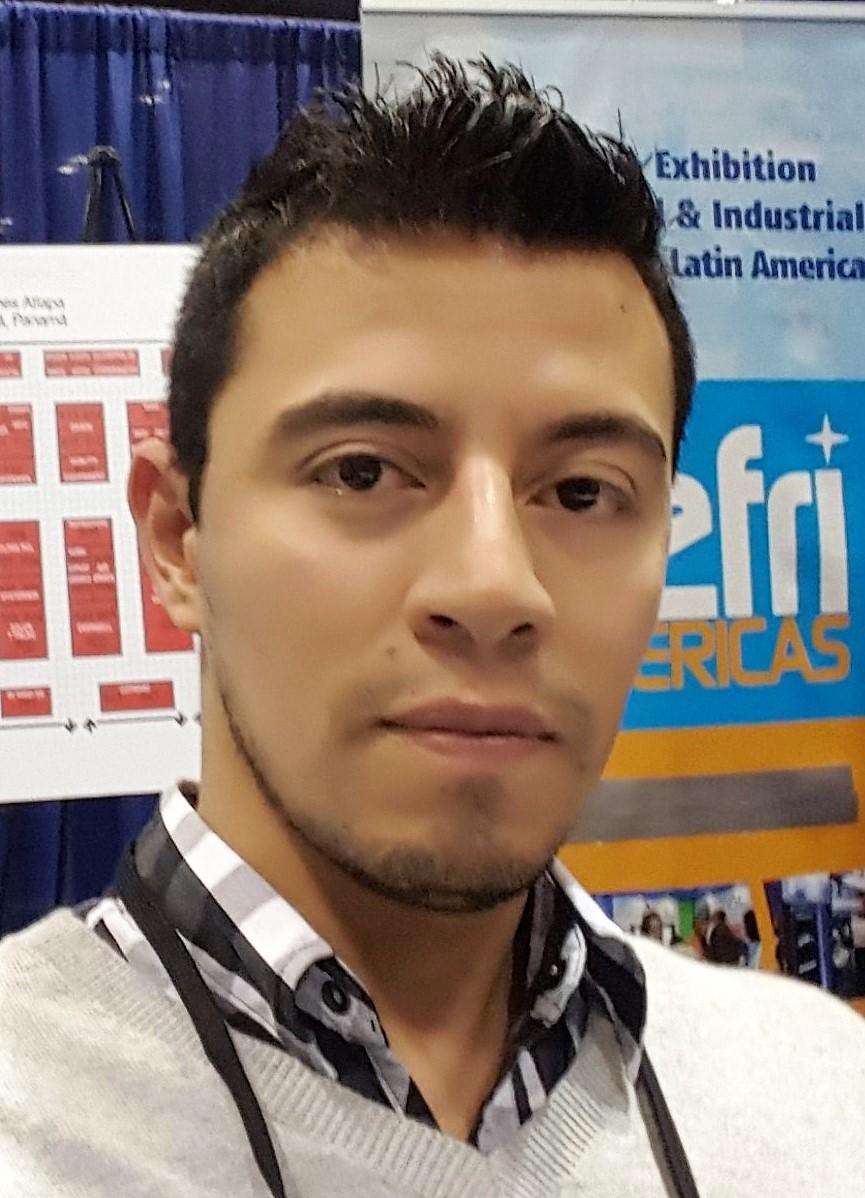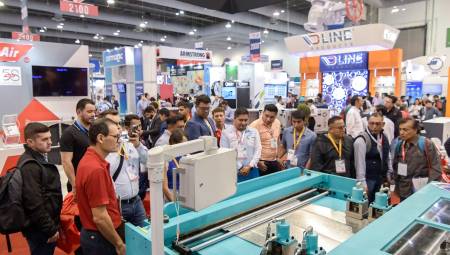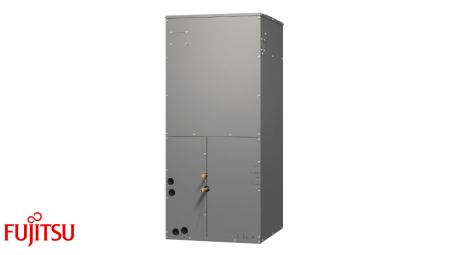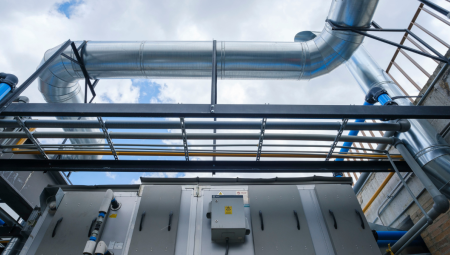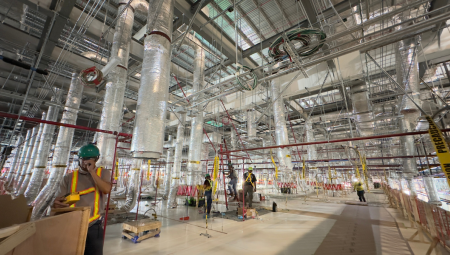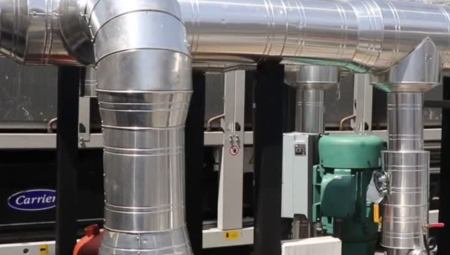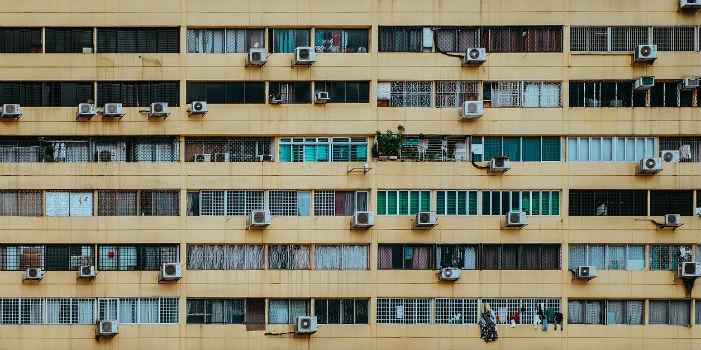 We present a series of recommendations in installation and operation key to achieve an efficient operation of air conditioning equipment.
We present a series of recommendations in installation and operation key to achieve an efficient operation of air conditioning equipment.by Eng. Willian Morales*
We will start this article by presenting different topics about new installations and with equipment already used in air conditioning.
Topics: 1. New installation:
- New equipment
- Analysis of the geographical location of the installation.
- Rational analysis of the location of the Condensing and Evaporator Unit.
- Optimization of the thermodynamics of the equipment to be installed such as the refrigerant.
- Optimal working pressure in the evaporator and condenser, overheating in the evaporator, subcooling in the condenser.
- Correct air distribution in the evaporator and condenser.
- Verification of compliance with thermodynamic and electrical parameters.
2.- Installation with indeterminate time of use: Equipment already used
- Taking the photograph of the installation before the initial general data collection
- Data to be taken, low and high pressure of the system, amperage of equipment work, calculation
- From the absorbed power of the system, temperature and H.R. of input and output of the Condenser, temperature and H.R. of the inlet and outlet of the evaporator, measurement of the Overheating of the evaporator and subcooling of the condenser, more data can be taken for a better evaluation of the maintenance work.
Search for possible improvements with minimal work and cost:
- Improve condenser location, possible evaporator relocation
- Look for the right pressure to achieve quality cold, on the low and high pressure side of the system.
- Clean contaminated refrigerant gas using filter dryers
- Perform the correct refrigerant charge by measuring overheating and subcooling
- Cleaning of impurities in the evaporator coil and condenser coil, as well as the lubrication of fan motors, change of bearings and combing of the fins.
- Measurement of the EER, COP, current system with support of real measurements of evaporator performance, power consumption in the compressor and auxiliary motors.
Methodologies for a correct installation of the evaporator and evaporator condenser: In the case of air conditioning systems equipped with direct expansion evaporators or ice water coils take into account the following:
Air flow according to the thermal load of the room, taking note of the characteristics of the occupied area, we can consider an air flow of 400 CFM per ton of cooling if there are no means to know the specifications of the product, it can also be assumed with a good criterion that the temperature of supply of cold air to the Room can be 52 °F, this is by a recommendation translated from a well-known formula: Tsuministro = Tinterior + 2 times the height of the room which is usually 9 feet (3 meters) all temperatures in °F.
Direction of primary airflow so as to achieve a terminal velocity of 0.22 m/s, or 25 feet per minute at most, when joined with secondary air formed by friction between layers of air with primary air currents, throughout the room, considering only the technical occupied area, that is, a parallelepiped whose measurements are taken inside the room leaving 0.5 m. of the walls and with a height of 1.80 meters from the floor, where the conditions of human comfort must occur.
In case of using air diffusers these are selected according to performance graphs, considering the coanda effect, which means that the flow of air out of the diffusers is attracted to the ceiling by a pressure issue, and then descend towards the users at a relative distance different from what was thought.
The measurement of evaporator inlet temperatures and H.R. for a 3-meter room will be within the following ranges for a normal installation whose sensitive heat factor has a value of 0.75:
- Temperature and H.R. of entry: 70°F – 75°F, 45% - 60%
- Temperature and output H.R.: 48°F - 52°F, 85% - 95%
With this data you can find the current and actual cold production of the equipment, that is, if the technical specifications plate of the equipment can say 60,000 BTUH, however the true performance of the equipment will come out of these measurements and the application of psychrometry.
In the case of having to place more than one 4-way diffuser in a room the location of the same with respect to the distance between them should be followed the following advice, the relationship between the distance between diffusers and the height of the room should be in ratio to 1.5 m.
Condenser
The recommendations for condensers are similar, but not the same as those for the evaporator.
Before thinking about placing the condenser on the roof I must think differently from an architect who would place them consistent with the walls of the building so that it is attached to the walls keeping a minimum distance between them and avoid air flows that are directed already hot to another condenser, this is already a lot to ask for an architect who only sees the aesthetics but is not prepared to know the effects of heat transfer by conduction, convection and radiation.
Installers are not guided by the beauty on a rooftop, rather we must make a previous study of the direction of the wind in each city and even in each district of the city, to know what direction and speed it has by wind maps that are known online; in the case of Lima the historical direction of the winds is mostly from the South, on a smaller scale of the SE and the OS, then the entry of the air to the condenser must receive the air in that direction, although that forces the condenser to be located in a different direction to the roof wall, preferably the capacitor should be high and have no obstacles such as adjacent walls.
By a wrong criterion sometimes roof top equipment or air-cooled condensers are covered with a concrete wall, so that they are not seen from the outside from the street, this is absurd if you do not want them to be seen it is better to build an ornamental brick wall with holes or a metal grille with holes that do not let you see the silhouette of the air conditioning equipment, but they let air flows through at least so it is a palliative to place a concrete wall, as I have seen many times, which obstructs the flow of air to the condenser. The additional energy consumption that the equipment spends by being partially covered to the air flow ranges from 10% to 35% more electrical energy than if it were well ventilated, if the recommendations are followed this will result in a much lower monthly payment of electrical energy.
Verify a refrigerant pressure that produces a quality cold in accordance with the evaporator data. Normally in the heat season we use for the R -22 a gauge pressure of 60 psig and for the high pressure of the system we use as a reference 220 psig, if we see this data in the P-T rule, we will observe that they correspond to an evaporation temperature of 34 °F (1 °C) in the evaporator and in the condenser the condensation temperature is At 108 °F (42 °C), in this way we can find with 1 °C and with 42 °C, the pressures of any refrigerant that we want to work the same as it does with the refrigerant R – 22, in this case for the R – 410 a, observing in the P – T rule the pressures of 105 psig and 360 psig respectively are obtained.
The color of the condenser unit should be clear, likewise it can have a roof, so that its metal structure is not heated, of course the roof should not obstruct the air flow of the condenser fan, placing a ceiling to the condenser equipment contributes to a decrease in electricity consumption of the order of 5% to 7.5% of the electrical consumption of the air conditioning equipment.
The installation of the condensing unit must be done so that continuous maintenance can be done without danger of falling off the cliff, it is ridiculous as some colleagues do the installation of the condensing unit on a façade wall without any access to future maintenance. That is completely irrational. To do it you would have to place a large and safe scaffold in a routine maintenance, that can be expensive, the owner of the equipment rejects a maintenance because it is very expensive, the lack of maintenance causes a high consumption of electric current of the equipment that will have to pay that high cost the owner of the equipment.
The minimum maintenance routine for equipment with a normal location in Lima, in a not very dusty place should be every three months, whether summer or winter, so it will be achieved that the equipment is always ready to work economically, for areas of greater environmental pollution this time must be reduced, especially in mining areas that are close to the city.
Poorly performed installations by the refrigerator
Regarding the suction insulator, it has a life time with an effective insulation, after 5 years they must be completely changed.
Refrigeration technicians think that the insulator is placed forever, but it is not so, since the insulator gets wet for reasons of contamination by condensed water vapor inside in climatic reasons that has to do with its protection with a vapor barrier and the dew point temperature, even when wet they leave it like this, but it must be changed for new dry insulators, since otherwise the consumption increases by 5% to 7% by having wet or damaged insulators.
User and graded temperature
According to peruvian law, RNE Title III.1 Chapter IX Article 54, for reasons of environmental conservation, the temperature must be between 24°C +- 2°C, with a relative humidity of 50% +- 5%. Published in the newspaper El Peruano on page 118.
The user of the air conditioning equipment must learn that with light clothing does not need a lower temperature than that dictated by law, so you will save a lot of electrical energy achieving thermal comfort in your environments, because of this reason you can achieve energy consumption savings of the order of 10% up to 25% of the air conditioning equipment achieving i reduce your payment of the electricity bill and the conservation of the environment.
* Eng. Willian Morales Quipe. Mechanical Electrician UNI – CIP N° 93846. General Manager RETER EIRL – PERU. You can be contacted by email: [email protected]


